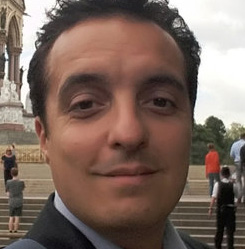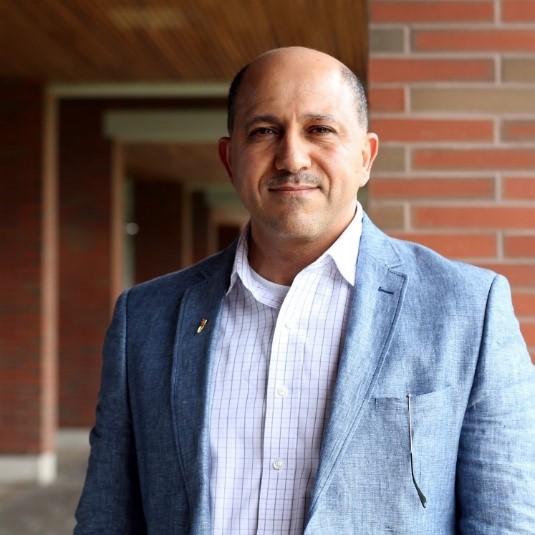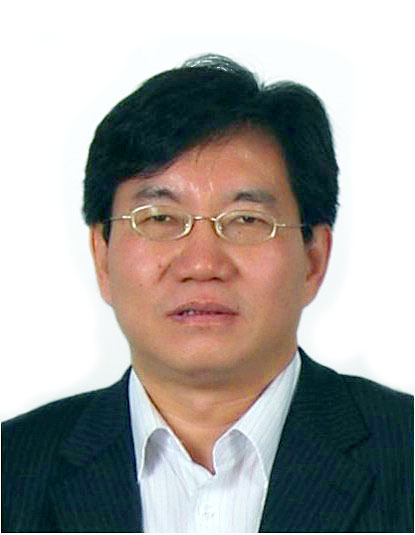Plenary Speakers
Prof. Hui Jin
Xi'an Jiaotong UniversityState Key Laboratory of Multiphase Flow in Power Engineering
Xi'an, China
Speech Title: Resistance Analyze and Enhancement for Coal Gasification in Supercritical Water
Abstract: The traditional coal utilization way has a series of disadvantages such as high pollution, high emission and high energy consumption. Supercritical water gasification technology, based on the concept of ordered energy conversion, provides a clean, low-carbon and efficient way of coal utilization owing to the unique physical and chemical properties of supercritical water. For technical application, mild gasification temperature can effectively reduce investment and energy consumption, but it also causes lower reaction driving force. Therefore, the method of resistance analogy analyze was used in this paper to find reasonable regulation methods to achieve the optimal matching of heat transfer, mass transfer and chemical reaction, so as to realize comprehensive resistance reduction. The research was carried out from three aspects: the enhancement of main reaction, the inhibition of side reaction and the coordination of multiple reactions. Firstly, the rate-determining step of gasification process was found, and the method of liquid residual recycle was proposed to increase the free radical concentration at the reactor bottom to promote the gasification of polycyclic aromatic hydrocarbons. Then, based on the obtained drag, heat transfer and diffusion equations, the methods of controlling the nozzle heat flow boundary, adjusting the injection angle and designing the swirl distributor were proposed, which effectively restrain the side reaction in the nozzle and the reactor bottom. Finally, the heat match was conducted for the whole reactor based on the accurate kinetic model, which avoided overheating and reduced the heat transfer resistance. Based on the above optimization methods, a demonstration plant was constructed, where more than ten typical coals in China were completely gasified under mild temperature.
Biography: Hui Jin, Born in 1982, Full professor since 2018 in Xi'an Jiaotong University. He focuses on the supercritical water gasification process and its large scale utilization. He has published more than 100 paper with more than 3800 citations, 14 papers were indexed as ESI paper, and 3 papers were indexed as hot papers. He also has public or authorized 27 patents. Serve as editorial board member of Carbon Resources Conversion, Carbon Capture Science & Technology, and Guest editor in ACS Sustainable Chemistry & Engineering, Renewable Energy, Sustainable Energy Technologies and Assessments, International Journal of Hydrogen Energy, Journal of Renewable Materials. He was awarded by the first prize of science and technology of Shaanxi Province, 2014.
Dr. Saim Memon
Solar Thermal Vacuum Engineering Research Group, London Centre for Energy Engineering, School of Engineering, London South Bank University, UKSpeech Title: Hybrid Renewable Energy Systems Integration and Advanced Smart Insulation Technologies for Net Zero Energy Buildings (NZEBs)
Abstract: The notion at which, nowadays, buildings are being aspired to achieve to be net zero-energy buildings (NZEBs) are widely recognized. The heat loss through the windows of buildings is one of the factors contributing to high energy consumption for space heating ensuing in preventable carbon emissions. This talk/paper aims to present the novel constructions and performance characteristics of the advanced smart vacuum insulation technologies that are: (i) Vacuum Glazing (VG), (ii) Triple Vacuum Glazing (TVG), (iii) Electrochromic Vacuum Glazing (EVG), (iv) Semi-transparent Photovoltaic Electrochromic Vacuum Quadruple Glazing (STPV-EVG), (v) Translucent Vacuum Insulation Panel (TVIP), and (vi) Fusion-sealed Vacuum Glazing (FVG). The experimental results show VG achieved U-value of 0.97 Wm-2K-1, it was further reduced with TVG that achieved U-value of 0.33 Wm-2K-1. To control the solar heat gains from 0.41 (transparent mode) to 0.13 (opaque mode), ECG is constructed that achieved U-value of 0.82 Wm-2K-1, it required electrical power of < 0.4 Wm-2. To make it self-reliant, the semi-transparent PV glazing was integrated to EVG to supply the power and store the generated energy using NiMH battery, the STPV-EVG achieved U-value of 0.79 Wm-2K-1. Due to the cost of hermetic glass edge-sealing materials, a new structured core transparent vacuum insulation panel (TVIP) is constructed, to accomplish insulation for the windows without edge sealing effects, that achieved U-value of 1.72 Wm-2K-1 but suffered the vacuum pressure degradation. The development of novel cost-effective fusion seal for the construction of fusion-sealed vacuum glazing (FVG) is detailed that achieved the U-value of 1.24 Wm-2K-1. The implementation of composite edge sealed vacuum glazing on photovoltaic solar thermal collector (VPV/T) is also discussed in this talk.
Biography: Dr. Saim Memon is the Head of Solar Thermal Vacuum Engineering Research Group, Senior lecturer and Course Director at London Centre for Energy Engineering, London South Bank University, London, UK. He studied PhD in Renewable Energy in Buildings (Vacuum Insulated Smart Windows) as part of EPSRC Funded CALEBRE Project at School of Mechanical, Electrical & Manufacturing Engineering (Loughborough University, UK), PGCert Teaching Qualification (University of Aberdeen, UK), MSc in Mechatronics (Staffordshire University, UK), BEng (Hons) in Electrical Engineering MUET. He is Chartered Engineer and a Fellow of Higher Education Academy and having Qualified Teacher status by General Teaching Council for Scotland (GTCS).
His research experiences are on are on: energy-materials for vacuum-insulated-smart-windows to net Zero Energy Buildings; vacuum based photovoltaic solar thermal collector; applied semi-transparent photovoltaics and electrochromic films; translucent vacuum insulation panel; renewable energy technologies; thermoelectric devices for energy harvesting applications with vacuum-insulation; smart-grid integration to electric-vehicles with fast charging battery mechanism and; harvesting the concentrated solar irradiations to useful electrical energy.
He published over 60 research articles in the form of journals, book-chapters, patent-provisional, conferences, book-editor, newsletter and magazines. In 2020, he published 23 research articles. He has over 7 recent journals published & recognised as 4* for REF 2021. He raised funding of £261,789 from H2020, Innovate-UK, The IET/IMechE Engineering-Education-Grant-Scheme EEGS, DAIWA-Anglo-Japanese, Royal Academy of Engineering participation and Newton-Fund participation grants. He leads international collaborations. He has been invited speaker in numerous conferences/workshops and presented research findings and developed collaboration with researchers in the UK, Europe, USA, UAE, Japan, Australia, Thailand, Pakistan, India, Malaysia, Kenya, Peru, South Africa, Russia, Belarus, Kyrgyzstan, China and Hong Kong.
He is the founder and Editor-in-Chief of International Journal of Solar Thermal Vacuum Engineering with international collaboration of 14 countries worldwide. He was also an Editor-in-Chief for the book on Advanced Thermoelectric Materials for Energy Harvesting Applications, it attracted worldwide collaborations. He holds a Guest Editor role in Sustainability on a special issue of Renewable Energy and Advanced Smart Vacuum Insulations Technologies for Zero Energy Buildings (2019-2021). He also holds a Guest Editor role in Energies on a special issue in Applied Solar Thermal Energy (2020-2021). He is a recognised reviewer of over 18 prestigious journals by Elsevier, Springer, IEEE, Taylor & Francis and MDPI publishers.
He taught 34 BEng/MSc modules and supervised over 25 BEng/MSc/PhD projects. He demonstrated and evidenced his excellent track record in Teaching and Supervision practices throughout his career. He developed and led a project that engaged local London Engineering students on Solar Car Challenge as part of the IET IMechE Engineering Education Grant Scheme. He also organised and chaired international and national conferences. He is founder of DEEE Society at LSBU for students’ academic engagement. He has outstanding volunteer contributions throughout his academic career as evidenced on his profile such as: he contributed to the society as vice-chairman of The IET Young Professionals; elected Executive Officer at Staffordshire University Students Union; elected committee member of Postgrad Taught Students at NUS UK; elected vice-chair at Loughborough University Postgraduate Association; elected honorary secretary and committee member at Vacuum Group Institute of Physics; and many more volunteer roles he held and served our UK community.
Prof. Pierluigi Siano
Department of Management & Innovation Systems, University of Salerno, ItalySpeech Title: IoT based Methods and Architectures for the Optimal Management of Distributed Battery Energy Storage Systems for Flexibility Service Provision
Abstract: The increasing penetration of renewable energy sources and the empowerment of consumers as a central and active solution to deal with the generation variability are paving the path towards local energy markets. The keynote is focused on the local smart electricity market where even small size consumers and prosumers can sell/buy the locally produced electrical energy or power to contribute to the balance of the power system. The local electricity market is managed by a commercial aggregator, organized as a Virtual Power Plant (VPP), that gathers the energy/power flexibility offered from its consumers/prosumers portfolio.
In this new model, the provision of ancillary services to the Transmission System Operator (TSO) should take into account the possible flexibility furnished by new distributed resources, such as dispersed and small generators, also based on RES, and frequently endowed with small batteries. In particular, distributed Battery Energy Storage Systems (BESSs), also of small scale, that were mainly used to decrease the uncertainty due to RES and to increase the energy self-consumption for the end-user, can be also managed to provide energy flexibility to the TSO.
Biography: Pierluigi Siano received the M.Sc. degree in electronic engineering and the Ph.D. degree in information and electrical engineering from the University of Salerno, Salerno, Italy, in 2001 and 2006, respectively.
He is a Professor and Scientific Director of the Smart Grids and Smart Cities Laboratory with the Department of Management & Innovation Systems, University of Salerno.
His research activities are centered on demand response, on energy management, on the integration of distributed energy resources in smart grids, on electricity markets and on planning and management of power systems.
In these research fields he has co-authored more than 500 articles including more than 300 international journal papers that received in Scopus more than 9700 citations with an H-index equal to 49.
In 2019 and 2020 he received the award as Highly cited Researcher by ISI Web of Science Group. He has been the Chair of the IES TC on Smart Grids.
He is Editor for the Power & Energy Society Section of IEEE Access, IEEE TRANSACTIONS ON INDUSTRIAL INFORMATICS, IEEE TRANSACTIONS ON INDUSTRIAL ELECTRONICS, Open Journal of the IEEE IES, IET Smart Grid and IET Renewable Power Generation.
Prof. Hossam Gaber
Faculty of Energy Systems and Nuclear Science, Ontario Tech University, CanadaSpeech Title: Interconnected Micro Energy Grids for Resilient Energy-Water-Transportation Infrastructures in Smart Cities
Abstract: This talk will present research planning, design and control strategies of energy-water-transportation infrastructures to support smart cities and communities using interconnected micro energy grids. The talk will cover design and control aspects of interconnected micro energy grids as well as resiliency and performance measures to achieve energy-water-transportation networks and interconnections among them. With the recent pandemic challenges, it is important to study possible coupling measures among these networks and possible performance dependencies. The talk will also discuss smaller units such as micro energy grids to handle these coupling and discuss design and operation requirements to achieve high performance for all individual networks. Planning strategies will be discussed to ensure highest overall performance, reduced risks, and minimum gaps with user requirements and demands. The talk will discuss possible data centers and operation scenarios in normal and emergency situations within smart cities and connected communities.
Biography: Dr. Gabbar is a full Professor in the University of Ontario Institute of Technology (UOIT) in the Faculty of Energy Systems and Nuclear Science, and cross appointed in the Faculty of Engineering and Applied Science, where he has established both the Energy Safety and Control Lab (ESCL), Smart Energy Systems Lab, and Advanced Plasma Engineering Lab. He is the recipient of the Senior Research Excellence Aware for 2016, UOIT. He is leading national and international research in the areas of smart energy grids, energy safety and control systems, and waste to energy using advanced plasma technologies. Dr. Gabbar obtained his B.Sc. degree in 1988 with first class of honor from the Faculty of Engineering, Alexandria University (Egypt). In 2001, he obtained his Ph.D. degree from Okayama University (Japan). From 2001 till 2004, he joined Tokyo Institute of Technology (Japan), as a research associate. From 2004 till 2008, he joined Okayama University (Japan) as an Associate Professor, in the Division of Industrial Innovation Sciences. From 2007 till 2008, he was a Visiting Professor at the University of Toronto. He also worked as process control, safety, and automation specialist in energy and oil & gas industries. Dr. Gabbar has more than 230 publications, including patents, books / chapters, journal and conference papers.
Prof. Fushuan Wen
Department of Electrical Engineering, Zhejiang University, ChinaSpeech Title: Flexible ramping products for enhancing power system operation security in electricity market environment
Abstract: In this speech, the following contents will be covered:
1. Power system security with ever-increasing intermittent renewable generation integration;
2. Exploring Flexible Ramping Products (FRPs) for maintaining power system security in evolving electricity markets.
3. Existing and potential Flexible Ramping Products.
4. FRPs and traditional ancillary services: differences and characteristics.
5. Opportunity cost based pricing for FRPs.
6. Expanding the existing market clearing models to include FRPs.
7. Provision of FRPs by battery energy storage in day-ahead energy and reserve markets.
Biography: Professor Fushuan Wen received the BE and ME degrees from Tianjin University, Tianjin, China, in 1985 and 1988, respectively, and the PhD degree from Zhejiang University, Hangzhou, China, in 1991, all in electrical engineering. He joined the faculty of Zhejiang University in 1991, and has been a full professor and the director of the Institute of Power Economics and Information since 1997, and the director of Zhejiang University-Insigma Joint Research Center for Smart Grids since 2010.
He has been undertaking various teaching, research and visiting appointments in National University of Singapore (NSTB Postdoctoral Fellow, Research Fellow), Hong Kong Polytechnic University (Research Fellow, Visiting Assistant Professor), University of Hong Kong (Research Assistant Professor), South China University of Technology (University Distinguished Professor), University of New South Wales in Australia (ARC Project Senior Fellow, Senior Visiting Fellow), Queensland University of Technology in Australia (CSIRO and ARC Project Visiting Fellow), Brunei University of Technology (Professor in Power Systems), Technical University of Denmark (Otto Monsted Guest Professor in Power Systems), Nanyang Technological University in Singapore (Visiting Fellow), Murdoch University in Australia (Adjunct Professor), Tallinn University of Technology (Professor in Energy Systems), Hangzhou Dianzi University in China (Yusheng XUE Education Foundation Distinguished Professor), Commonwealth Scientific and Industrial Research Organization (CSIRO) in Australia (Honorary Visiting Scientist), Shenzhen Institute of Artificial Intelligence and Robotics for Society (Visiting Principal Research Fellow).
His research interests include: 1) power economics and electricity markets; 2) power system investment, planning and operation optimization; 3) smart grids and electric vehicles; 4) power system alarm processing, fault diagnosis and system restoration; 5) artificial intelligence applications in power and integrated energy systems. He has published 200+ SCI-indexed papers, 650+ EI-indexed papers, and 720+ Scopus-indexed papers. His publications have been cited for 16000+ times. He has completed and is undertaking more than 170 grants and projects from governmental organizations and industry.
Prof Wen received many awards both at the national level and provincial level, including the most prestigious National Natural Science Award of China. He has been listed in "Most Cited Chinese Researchers" in six consecutive years since 2015 by Elsevier, and is the author of one of the China's 100 Most Influential Domestic Academic Papers in 2016.
Prof Wen is the editor-in-chief of Energy Conversion and Economics (IET, Wiley), the deputy editor-in-chief of Journal of Automation of Electric Power Systems, an editor of IEEE Transactions on Power Systems and IEEE Power Engineering Letters, a subject editor in power system economics of IET Generation, Transmission and Distribution, associate editor of Journal of Energy Engineering and Journal of Modern Power Systems and Clean Energy. He is also on the editorial boards of more than 10 journals.
Prof Wen was the General Chairman of 2020 International Conference on Smart Grids and Energy Systems (SGES 2020), Nov. 23-26, 2020, Perth, Australia.
Prof Wen was elected to IEEE Fellow for contributions to fault diagnosis in power grids in November, 2020.
To be updated…





